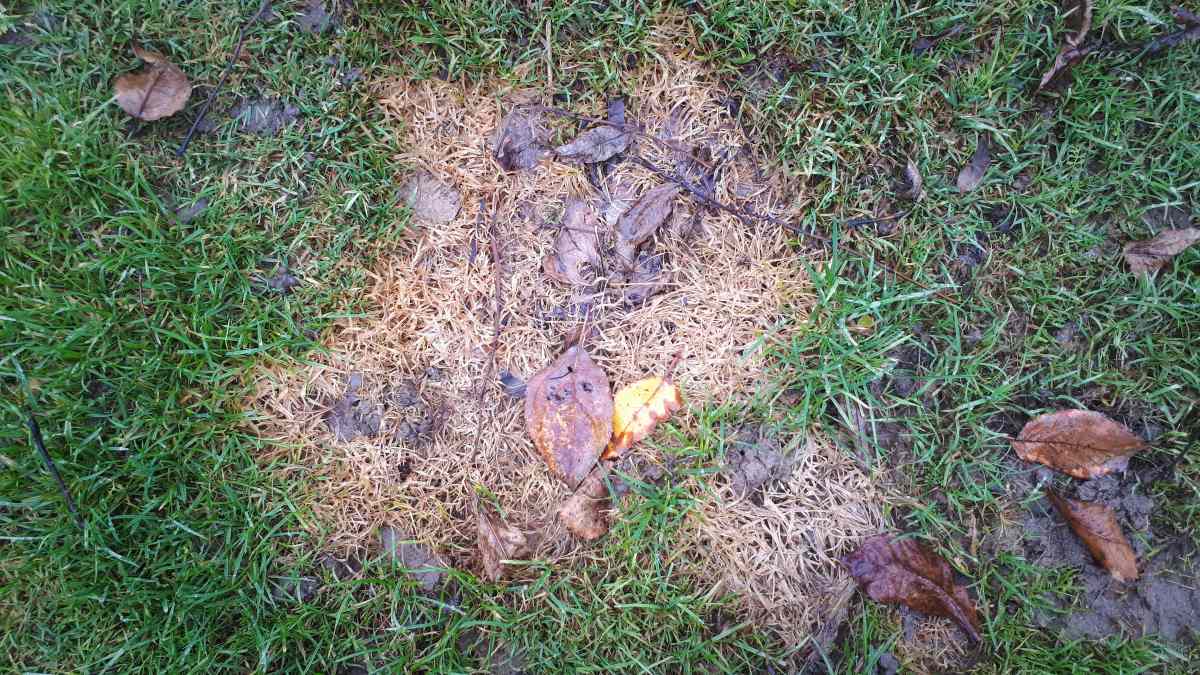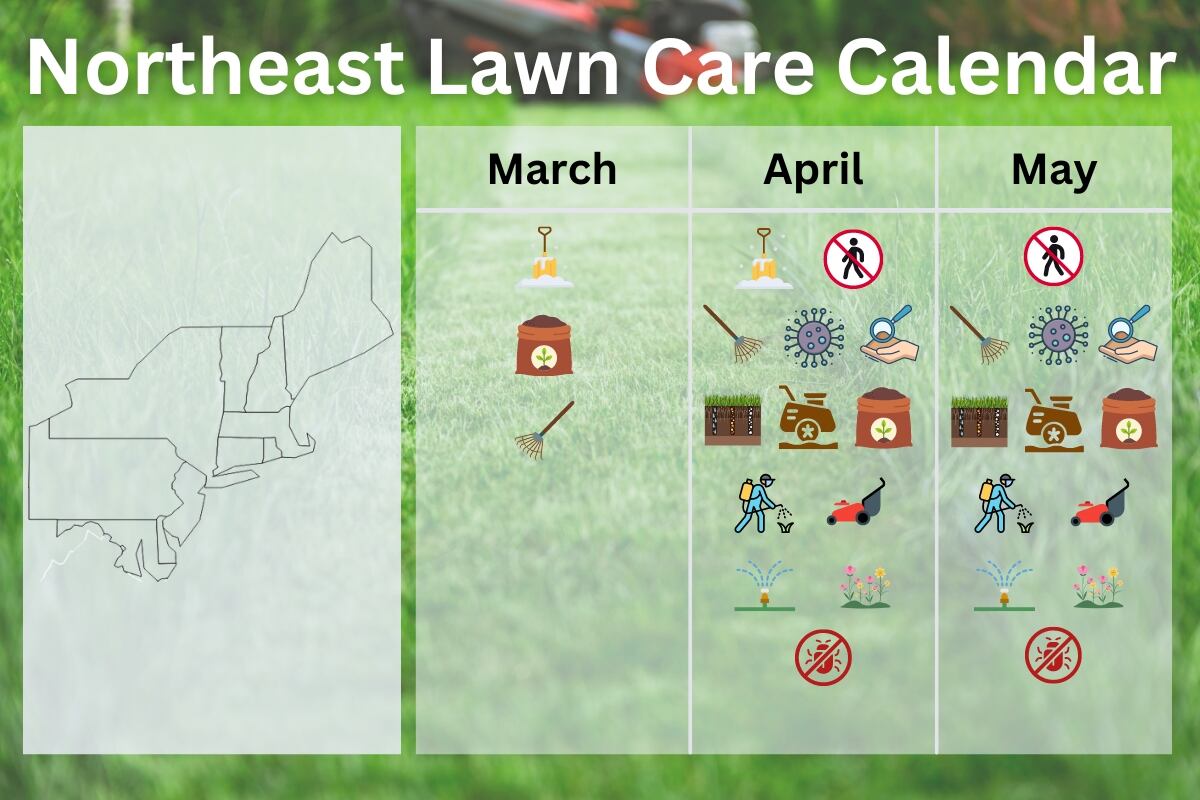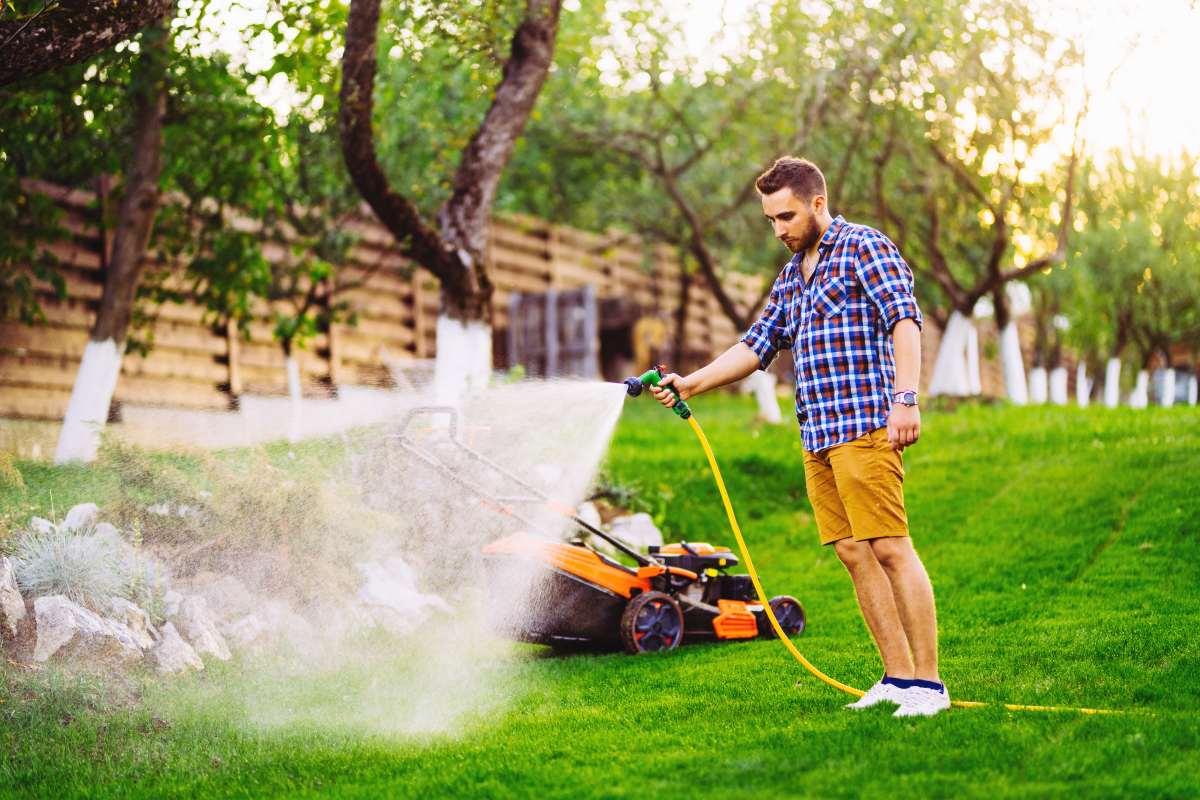
Centipedegrass is a low-maintenance grass that appreciates roughly 1 inch of water weekly during the growing season, including rainfall.
While centipedegrass is a warm-season turf, its shallow root system requires a specific watering routine. Instead of giving it a little bit every day, wait until you see signs that the grass needs water (such as wilted grass blades.) Then soak it thoroughly so the water reaches about 4 to 6 inches into the soil.
Let’s take a closer look at the water requirements of centipedegrass depending on weather conditions, seasons, and soil type. If you’re looking for further details on centipedegrass maintenance, including mowing, fertilizing, and pest control tips, then we recommend checking out our guide:
Watering Mature Centipedegrass by Soil Type
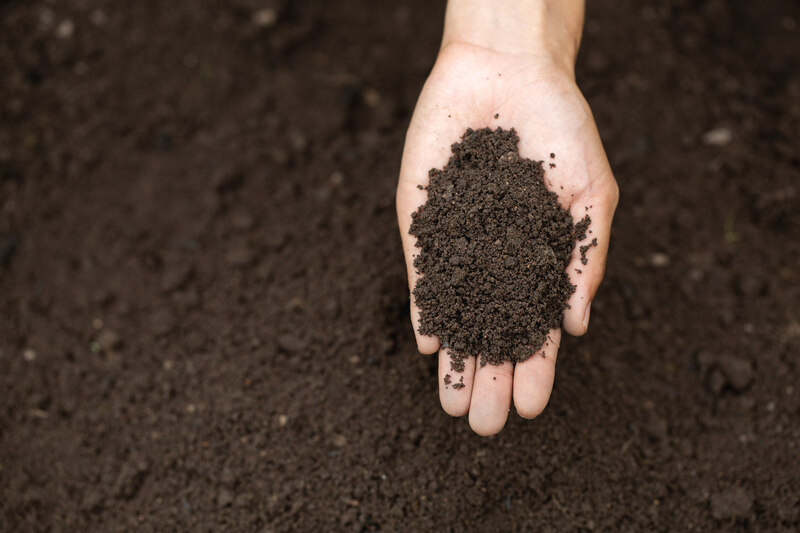
Watering mature centipedegrass efficiently involves understanding your soil since it directly affects water retention and usage.
Sandy Soil
For those with sandy soil, the centipedegrass will need watering more often due to the loose nature of sand that doesn’t hold water well.
- Apply around 0.5 inches of water every three days. After each irrigation round, ensure the soil is wet to a depth of 6 to 8 inches.
Clay Soil
On the other hand, clay soil retains water much better than sandy soil. While this is generally good for your centipedegrass, beware of overwatering as clay soil can become easily compacted and create drainage issues, leading to root distress.
- Apply about 0.75 to 1 inch of water once per week.
Remember, watering such soils requires a little patience. Start by watering until you notice runoff. Then, have a half an hour break – just enough time for the water to sink in. The aim? Get the water 4 to 6 inches deep with each irrigation round.
Watering Centipedegrass by Season

Centipedegrass, a favorite from South Carolina to Texas along the beautiful southeastern U.S. Gulf Coast, is a warm-season grass. It thrives in the late spring and summer months with the appropriate amount of sunlight and watering.
However, the grass requires different amounts of water during different seasons. Let’s break it down:
Watering Centipedegrass in Spring (March-May)
Status: Coming Out of Dormancy
Spring signifies the end of dormancy for centipedegrass. During this period, irrigation is rarely necessary except for newly sodded areas or during sudden warm spells causing hot, dry, and windy conditions.
As your grass awakes from its winter rest, keep an eye out for signs that it needs a drink: are the blades turning a dark bluish-gray hue? Can you see footprints lingering long after you’ve stepped away?
If yes to any of these, then apply about 1 inch of water per week (if rainfall is not covering this amount).
Watering Centipedegrass in (June – August)
Status: Actively Growing
Centipedegrass hits its growing stride in summer. Be prepared to water deeply and infrequently on an as-needed basis. Look out for signs of dehydration like wilting, curled leaves, a dark bluish-gray hue, and footprints that hang around more than usual – the grass is telling you it needs some moisture.
Status: Summer Dormant (If Applicable)
While the summer heat intensifies, centipedegrass may initiate its survival mechanism and go into dormancy. This brownish hue phase isn’t harmful to your lawn; it’s the grass’s natural response to protect itself against extreme heat and dry conditions. Here is how to manage watering for your dormant centipedegrass in summer:
- Planet-Friendly Approach During Dry Spells: If temperatures soar over 90 degrees Fahrenheit, established lawns can be allowed to go dormant with just a sprinkle every 3 to 4 weeks (about 0.5 inches). The grass won’t green up, but it will remain alive.
- All Green Lawn (No compromise approach during dry spells): Not a fan of the brown, dormant look in summer? Then it’s important to step up your watering game aiming for around 1 to 1.25 inches per week. Remember, grass will indicate when it needs hydration by displaying a dark bluish-gray color and visible footprints.
*Note: In areas with summer watering restrictions, stick to the rules and let your lawn get a little brown – it will green up again once rainfall returns or regular watering can be resumed.
Watering Centipedegrass in Fall (September – November)
Status: Preparing for Dormancy
In the fall, centipedegrass begins the transition back to dormancy. Lower temperatures and more regular rainfall mean your watering routine can take a back seat but should not be entirely forgotten.
During fall, aim for around 0.5 to 1 inch of water per week, including rainfall until the lawn goes dormant.
*Note: Don’t mistake your lawn’s fall-time yellow or brown hues as a sign that it needs more water. This is a normal part of centipedegrass’s life cycle as it prepares to go dormant for winter.
Watering Centipedegrass in Winter (December – February)
Status: Dormant
Winter is the dormant season for centipedegrass, so you can definitely dial back on your watering routine. The focus should shift from regular watering to monitoring conditions and offering additional hydration only as needed.
If the weather is exceptionally warm and dry for more than a month, apply only enough water to prevent dehydration – about 0.5 inches at a time, once every 2 to 3 weeks.
*Note: Do not water your lawn when temperatures are near freezing as it may result in icing, causing damage to the lawn and increasing the chances of disease or pests in warmer weather.
Spotting the Signs: When to Water Centipedegrass

The general guideline is to give your mature centipedegrass about 1 inch of water during its growing season, making sure the soil is moist around 4 to 6 inches deep.
However, these are starting points. Your lawn will let you know when it wants a drink. So be ready to change how often you water by watching out for drought-stress signs – then water first thing in the morning.
Signs that centipedegrass needs water:
- Wilted, folded, or curled grass blades;
- Grass taking on a dark bluish-gray color;
- Footprints remain visible on the lawn after walking on it.
Pro Tips:
- Water your lawn in the early morning, before 10 AM.
- Avoid watering during the heat of the day to reduce evaporation. Also, avoid late afternoon or night to prevent diseases caused by a wet lawn overnight.
- Use a rain gauge or a straight-sided can (like an empty tuna can) to see when you’ve reached one inch while watering.
Watering Newly Planted Centipedegrass
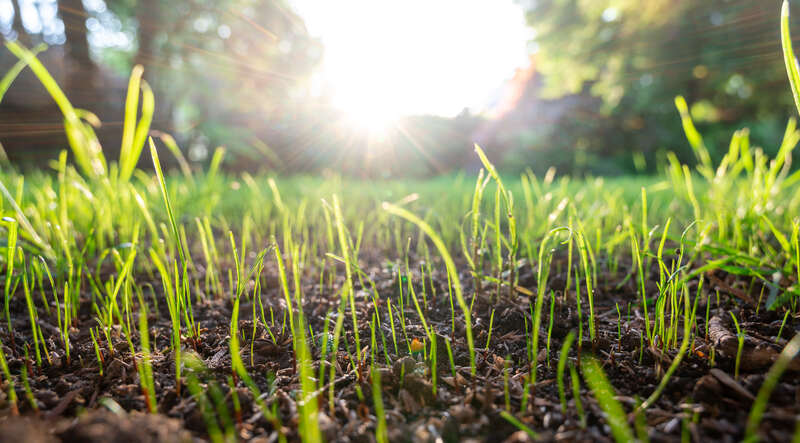
The water needs of newly planted centipedegrass, whether through seed or sod, are slightly different than those mentioned above for well-established lawns. Before seedlings root and establish, they require more attention to stay healthy.
Here are some tips on how to water newly planted centipedegrass:
- Seeded Centipedegrass: Keep the soil consistently moist until the grass is well-rooted, which takes about 2 to 3 weeks. This might require light watering once or twice a day depending on weather conditions and soil type.
Aim to keep the top 1 to 2 inches of soil moist but not soggy. Remember, too much water can also cause problems like disease.
- Newly Sodded Centipedegrass: Water the sodded area thoroughly immediately after you’ve finished laying it. Aim to wet the soil 3 to 4 inches deep. For the next 7 to 10 days, water lightly multiple times throughout the day to keep the top inch of soil damp.
Then transition to watering deeply but less frequently over the following weeks to encourage deep root growth.
*Note: After about 30 days, the sod should be established and you can begin watering on an as-needed basis. Also, avoid overwatering, which can lead to problems like disease, poor rooting, and water-logging.
Pro Help for Your Centipedegrass Needs
Centipedegrass makes an excellent pick if you’re in the Southeast and want a low-maintenance lawn. It loves about 1 inch of water each week during its growing season, but remember to tweak your watering schedule based on the weather conditions and soil type.
Proper mowing height can also help keep your lawn hydrated by reducing evaporation from the soil.
But if this all seems too much to handle or you’re just not sure where to start, you can always reach out to a local lawn care pro. They have the expertise needed to make sure your grass is always looking its best.
Main Photo Credit: aboutmomentsimages / Adobe Stock Free / License
